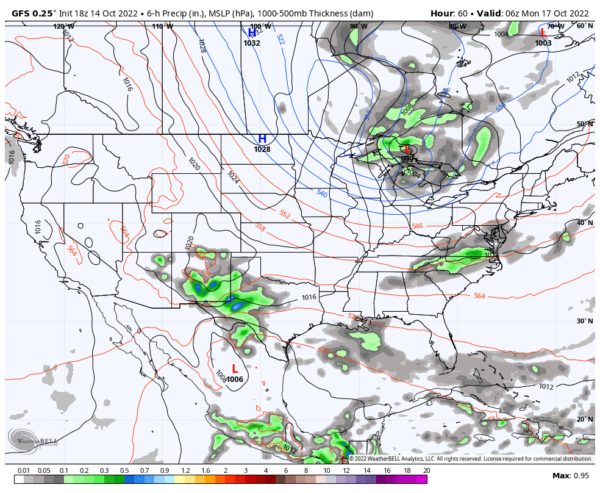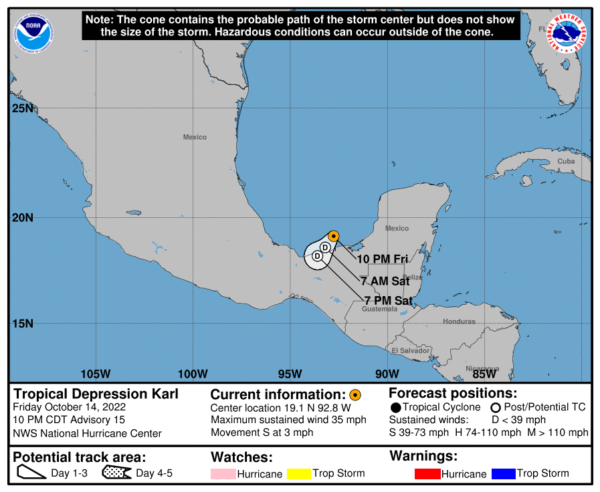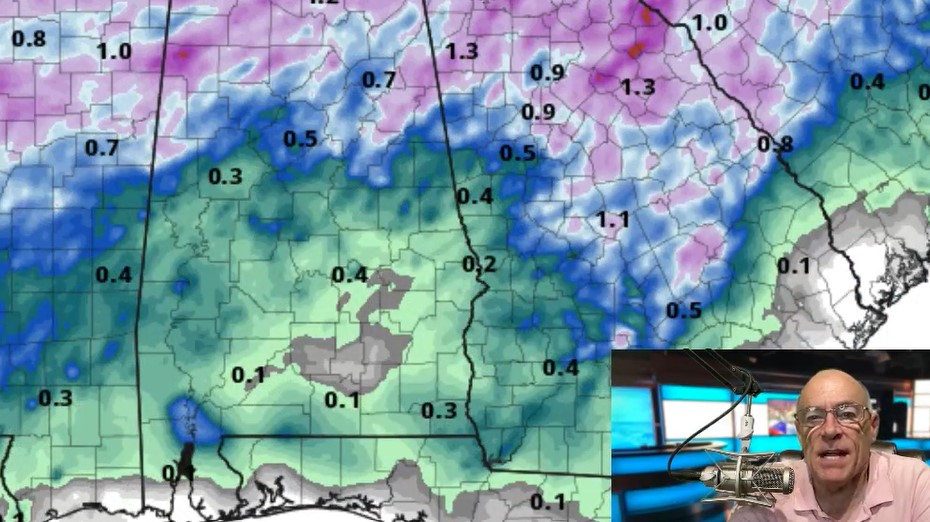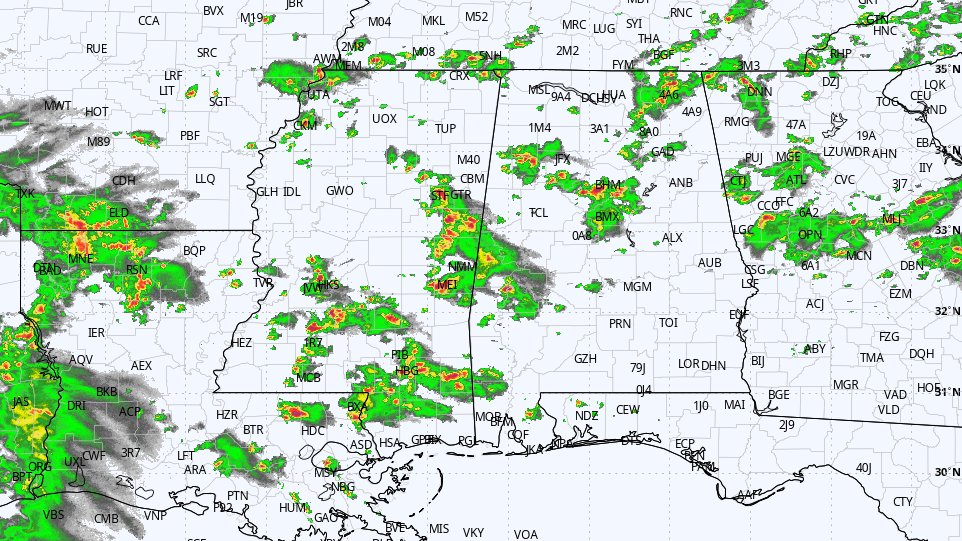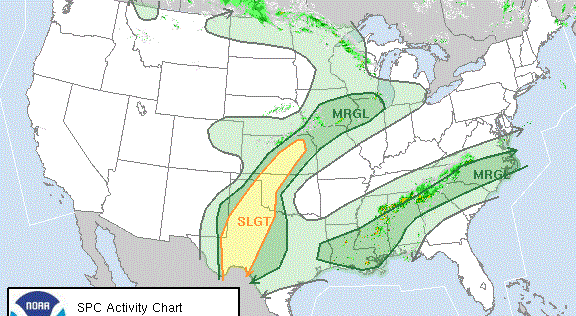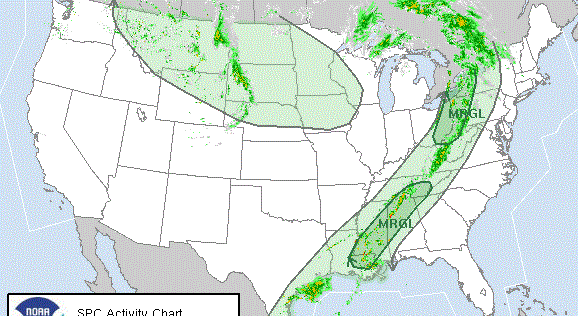Scott Martin: Warm weekend for Alabama, followed by a much cooler work week
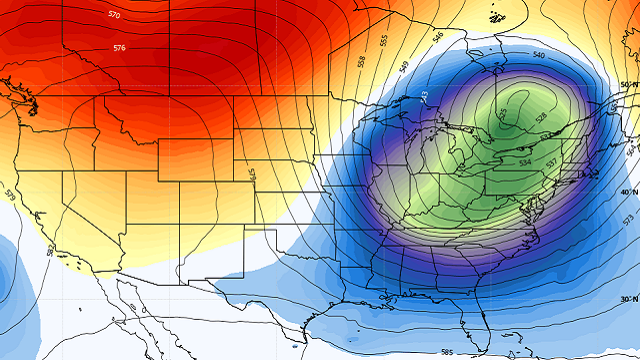
THE ALABAMA WEEKEND: Saturday looks to be mainly sunny for most across Alabama, but we may see a few clouds move in over the northern parts of the state late from a slowly approaching cold front. We’ll stay dry and warm, with highs in the lower to mid 80s.
The front will start to work its way into northern Alabama late Sunday, and a few isolated to scattered showers will be possible for the northern half of the state from early evening through the late night and overnight. Highs will be in the upper 70s to the mid 80s.
NEXT WEEK: The cold front will move through the southern half of the state early Monday morning, bringing any shower chances to an end. That will leave us with clearing skies and drier, cooler air filtering in. Highs will be in the mid 60s to the upper 70s.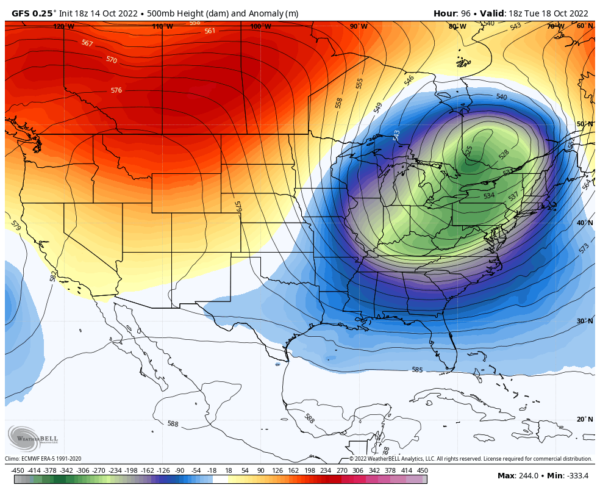
A trough over the eastern U.S. will send a blast of colder air into the Deep South. Tuesday will be breezy at times with sunny skies, but highs will be only in the lower 50s to the lower 60s. Scattered frost will be possible across much of the state, as lows will be in the upper 20s to the mid 30s.
Winds will be calmer Wednesday, but temperatures will not be that much warmer. Skies will be sunny, with highs in the upper 50s to the mid 60s.
We see the trough start to retreat northward and eastward on Thursday, which will allow our air to originate from more of the continental locations. Skies will continue to be sunny, with highs throughout the 60s.
On Friday, the warming trend will continue over the Southeast as sunny skies continue. Afternoon highs will be in the upper 60s to the lower 70s.
TROPICS: As of 10 p.m. Friday, Karl had weakened into a tropical depression and all of the watches and warnings have been dropped for the Mexican coast. Karl is expected to become post-tropical on Saturday and eventually dissipate on Sunday over southern Mexico.
We also have a tropical wave that is producing a large area of cloudiness and showers several hundred miles southwest of the Cabo Verde Islands, but that activity is not showing any signs of organization. Upper-level winds are expected to increase over the system during the weekend; therefore, significant development is not anticipated while the wave moves westward or west-northwestward at about 10 mph.
ON THIS DATE IN 1954: Hurricane Hazel made landfall near Cape Fear, North Carolina, with winds near 150 mph and a central pressure of 938 millibars (27.7 inches) – a Category 4 hurricane. Tides reached 18 feet above normal, resulting in extreme destruction along the North Carolina coast. At Long Beach, just west of Southport, 300 homes simply vanished. No debris remained – everything was swept away. Every fishing pier from Myrtle Beach, South Carolina, to Cedar Island, North Carolina, a total of 170 miles, was destroyed. As the hurricane moved inland, it rapidly transformed into an extremely powerful extra-tropical storm and raced north-northwestward through the Mid Atlantic states. Washington, D.C., had record-setting winds sustained at 78 mph with gusts to 98 mph. Hazel killed 95 people and caused $251 million in damage in the U.S. As Hazel moved into southern Ontario, it interacted with a strong cold front and unloaded more than 8 inches of rain on already saturated soil in the Toronto area, and major flash flooding occurred. Another 78 people were killed in Ontario, with damage around $100 million.
For more weather news and information from James Spann, Scott Martin and other members of the James Spann team, visit AlabamaWx.
